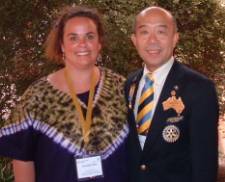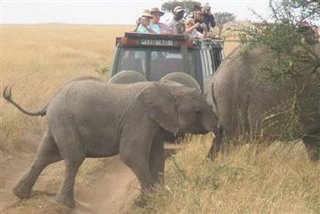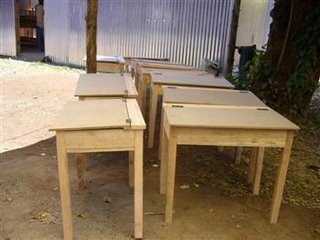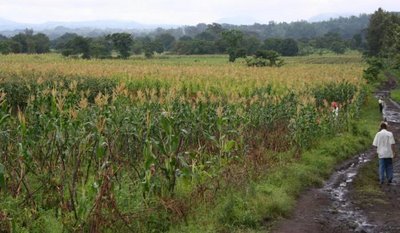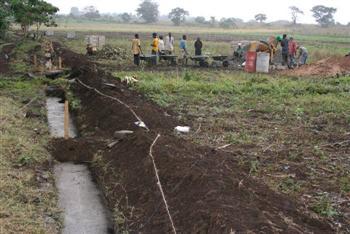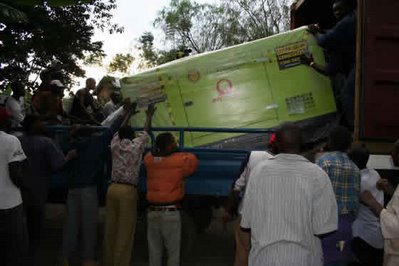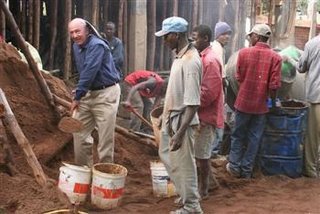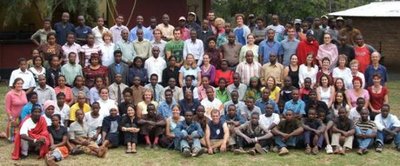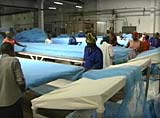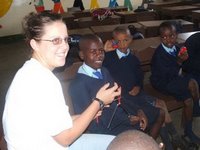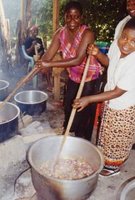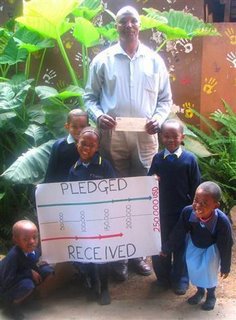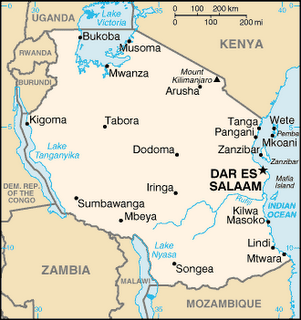Who is the driving force behind the School of St Jude? The founder who has triggered this focus of generosity from First World countries is Australian woman Gemma Sisia. She has dreamed up this project and runs it in a way that makes 100s of people just want to get behind it.
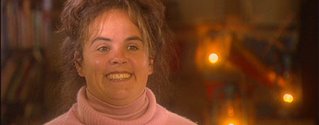
The Melbourne Age newspaper wrote this about Gemma in September 2006.
"Sisia’s journey to Africa began after she graduated from Melbourne University with degrees in science and education in the early 1990s. Instead of settling for a comfortable life as a teacher in her home country, she set off for Uganda to volunteer in a school run by nuns. After three years she came home to a teaching job and used part of her salary — along with regular monthly donations from family and friends — to pay for the education of Ugandan children who would otherwise not be able to go to school.
"Winnie, the first girl she helped, is now a lawyer who this year opened her own office in Kampala. But frustrated by the inadequacies of being involved from a distance, Sisia decided to take a more active role in these children’s lives. It wasn’t all about work. She had fallen in love with Africa, and with the man who is now her husband and father of her two young sons — Richard Sisia, the Tanzanian who led a safari she and a friend went on when she worked in Uganda. ]
"Encouraged by Richard’s father — a village chairman who offered her a small parcel of land on which to build a school — Sisia began the project that now dominates her life.
"The idea seemed so preposterous that she named it after St Jude, the patron saint of hopeless cases. "A girl from the Australian bush trying to build a school in Tanzania — that’s a serious hopeless case, isn’t it?" she says.
"Those who share her religious beliefs might say Gemma Sisia’s prayers were answered. The school, housed in solid brick buildings, now educates 700. She has mobilised squadrons of volunteers, including a team of builders from NSW who were among the first to give up their holidays to make the school a reality.
"And she’s employed and trained scores of Tanzanians, from teachers to bus drivers to cooks and builders. Even the pristine school uniforms are sewn by local women.
"Along the way, this young woman with the calm and friendly manner, who grew up with six brothers on a farm in NSW and learned early to take risks, has won respect in the region. Sisia now calls Africa home, but she says: "I’ll always be an outsider."
"She is clear-sighted enough to realise that to be really effective, St Jude’s must be an African enterprise. She’s training local teachers and administrators for leadership — all heads of department are Tanzanians — and defers to a parents’ committee when dealing with family problems."
The sidebar links to the full story.
In just four years, the school has grown from 4 students to 700. It takes in an additional 170 students each year and builds classrooms for them. Gemma is thinking ahead so she can have a secondary school for her students when they finish primary school – the oldest class is Year 5 this year.
And when you take in only kids from the poorest families, (if families have more than two rooms houses, or have electricity, or have glass windows, their kids don't qualify for St Jude's) how do you help those kids to achieve excellence in school? Well, one thing you do if you are Gemma Sisia is set up a Monday-Friday boarding house for the really vulnerable ones.
A local order of nuns, the Sisters of the Oblates of the Assumption will run it in conjunction with the school.
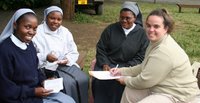
Gemma says, "
The more I spend time with them, the more I am convinced that they are just the right people to be assisting us – their care and concern and eagerness to participate show just as much as their intelligence and wisdom in this area. It’s a great relief to have these wonderful women sharing our plans. Many thanks to the Sisters for taking on this massive project with us!"You can make a massive contribution to the Millenium Goal of ending world poverty by adding your support to this well-run school that is providing excellent education and care for 100s of the worlds poorest children.
